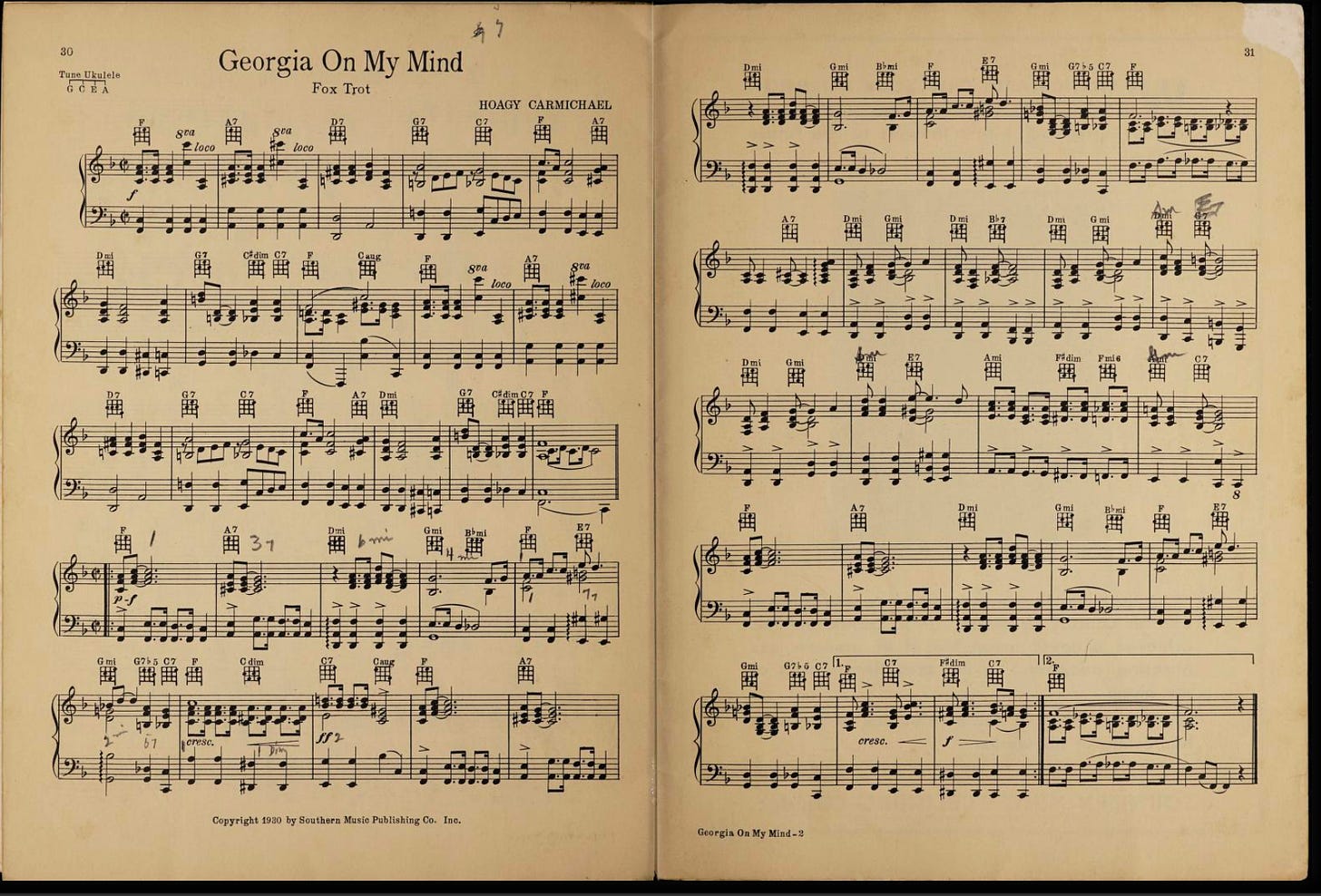BILLIE HOLIDAY The Improviser, Part 2: "Georgia"
There are several more installments to come in this series on Holiday’s improvisations. Believe it or not, out of the hundreds of articles and books written about her, I do not know of any other writings that use specific measures from specific recordings (as opposed to broad generalities) to analyze Billie Holiday’s musical genius —and she was a musical genius! I will also post about other aspects of her art.
As discussed in Part 1, Billie certainly could not scat the way Ella Fitzgerald could. And she never scatted in performance, only in rehearsal to demonstrate something to her musicians. But the question remains, why? Why did she never scat in performance? As I see it, singing was serious business for her. It would have made no sense for her to break out into scat in the middle of a song, even if that worked for Ella and some other singers. For Billie Holiday, singing was about the lyrics, and about telling a story that came from life.
Let’s turn now to Hoagland “Hoagy” Carmichael’s well-loved song, “Georgia On My Mind.” Here is a piano arrangement from 1930. It starts with an introduction. The familiar melody, or chorus, starts on the fourth line, at the double bar with repeat sign:
And here is a version with the words, copyrighted 1930, as reproduced in a 1946 songbook. Notice that the words are credited to Hoagy’s longtime friend since college, Stuart Gorrell. Hoagy acknowledged Gorrell’s help in his second book, Sometimes I Wonder (1965). But the late musician and jazz historian Richard Sudhalter looked at Carmichael’s papers and found that the words were mostly by Hoagy, with just a small contribution from Stuart (see Sudhalter’s bio of Hoagy, Stardust Melody, 2002, p.151). In this and other known instances, when Hoagy received help, he was generous about acknowledging it. Here’s the sheet music:
(As musicologist José Bowen pointed out in 1993, popular songs were published in a variety of arrangements—easy, advanced, solo piano, vocal, band, etc.—in order to capture the largest market. Bowen Article. These were almost always written by the publisher’s talented staff arrangers, not by the song’s composer. So for popular songs there is usually no “definitive composer’s version,” no “urtext,” as they say in classical music.)
This is a song where singers traditionally take some liberties, even Carmichael on his own recordings. The straightest version I could find—the closest to the above sheet music-- is this one featuring Joe Howard on trombone with the Paul Weston orchestra in 1955:
This is a song that most of you probably know well enough to recognize how Billie makes it her own on three different takes, recorded within a few minutes of each other in the studio in 1941.
On all three takes she sings a whole new melody of her own, and she sings it a little bit differently each time ---except for the second phrase “the whole day through” which she does pretty much as written.
Here’s Take 1:
And Take 2:
And finally, take 3:
She is brilliant, truly!
MORE to come—and of course more on other topics as well.
All the best,
Lewis




